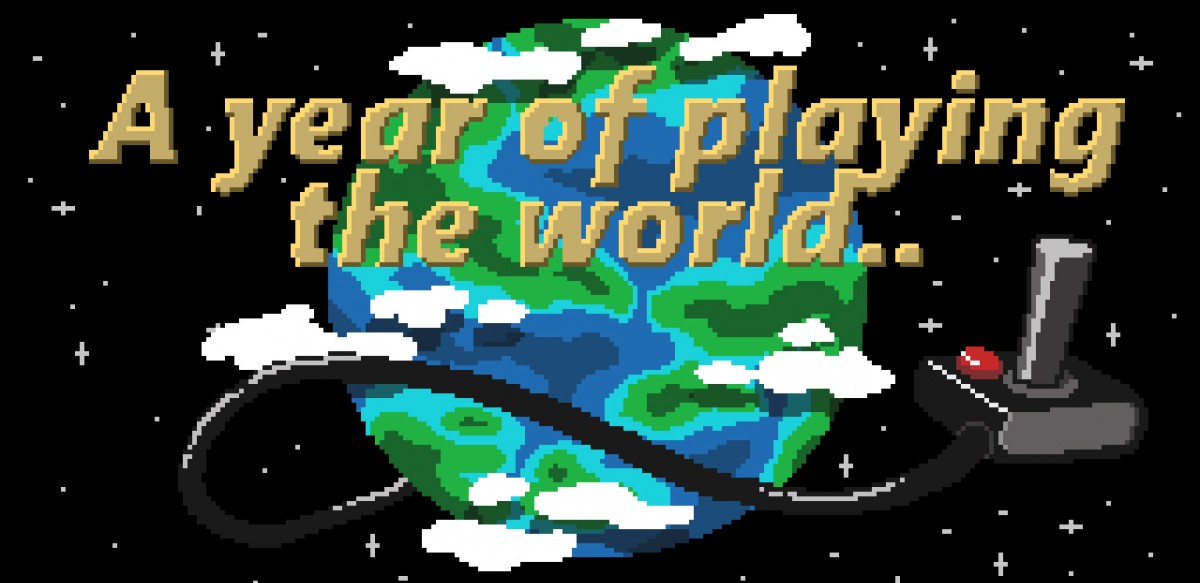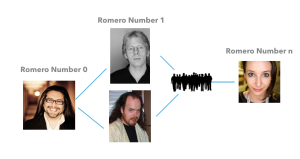projects
“We are at the very beginning of time for the human race. It is not unreasonable that we grapple with problems. But there are tens of thousands of years in the future. Our responsibility is to do what we can, learn what we can, improve the solutions, and pass them on.”
Richard Feynman
dissertation “immersive and engaging forms of virtual learning”
“We are only barely out of the discovery phase for technology (Faraday discovered his “law” in 1830, just a few hundred years ago), and we are just beginning a journey of many thousands of years to make this incredibly important principle, the basis of all technology, widely comprehensible. Pirker’s thesis will be seen in retropect as one of the many important steps in the progression to this ultimate goal.”
(John Belcher, MIT Kavli Institute for Astrophysics and Space Research)
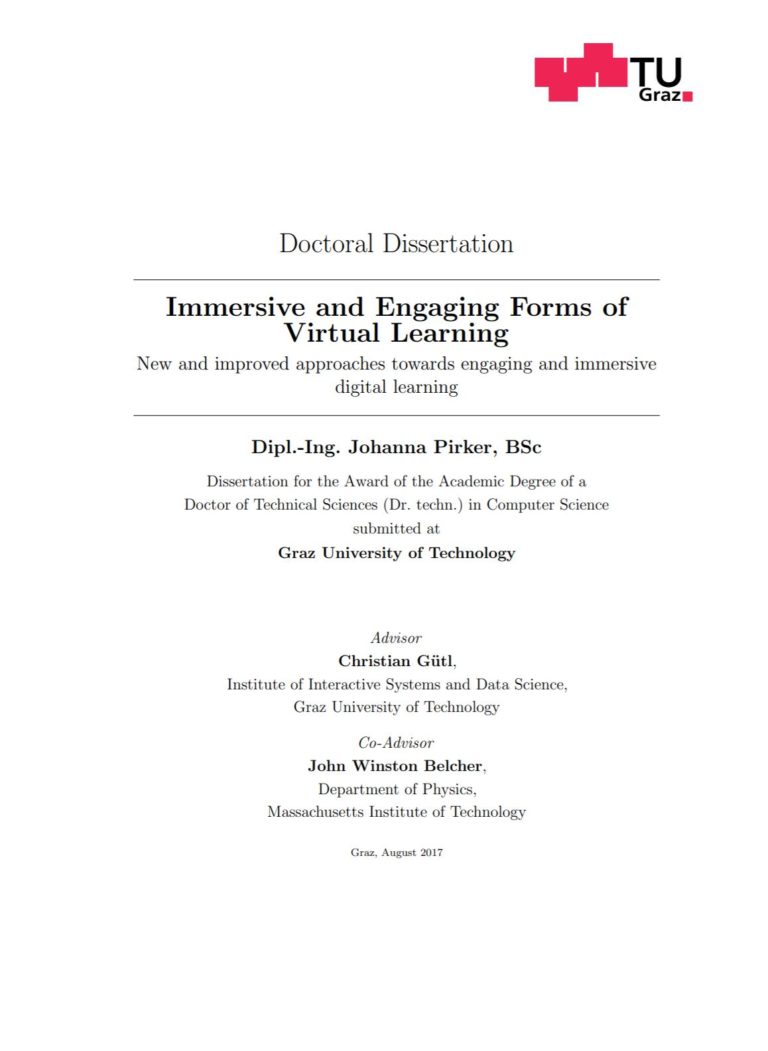
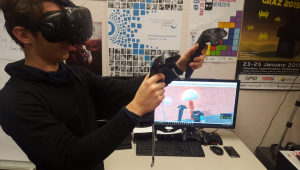 Maroon
Maroon
Maroon (2013-now) is an award-winning interactive physics laboratory and experiment environment implemented, designed for active learning in the classroom or at home. It visualizes and simulates various physics experiments (at the moment solely electromagnetic experiments) and supports room-scale but also mobile VR experiences.
Details: https://jpirker.com/maroon/
Awards:
- 2017 GOLC Award for “Best Visualized Experiment”
Publications:
- Pirker, J., Lesjak, I., Parger, M., Gütl, C. (2017, March) An Educational Physics Laboratory in Mobile Versus Room Scale Virtual Reality – A Comparative Study. In Remote Engineering and Virtual Instrumentation (REV), 2017 13th International Conference on. IEEE.
- Pirker, J., & Gütl, C. (2015). Educational Gamified Science Simulations. In Gamification in Education and Business (pp. 253-275). Springer International Publishing.
- Pirker, J., Gütl, C., Belcher, J.W., Bailey, P.H.: Design and Evaluation of a Learner-Centric Immersive Virtual Learning Environment for Physics Education. SouthCHI 2013: 551-561.
Press Coverage:
- future magazine (Wiener Zeitung – , Austrian newspaper german): https://austria-forum.org/af/AEIOU/Virtual_Reality
- scilog Spektrum (German Magazine, english) https://scilogs.spektrum.de/hlf/spotlight-johanna-pirker-phd-student-researching-hci-vr-games/
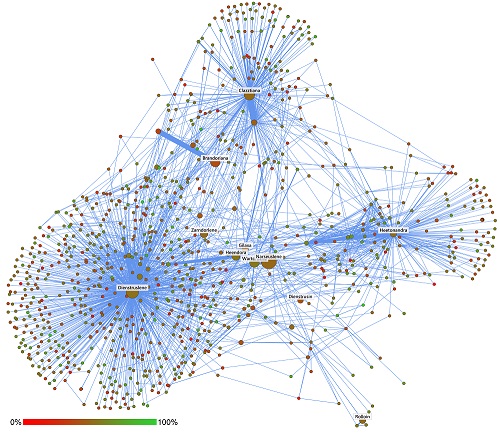
Big Data and Graph Theory
I analyze data with machine learning techniques and graph theory to understand human behaviour and engagement within social systems such as Twitter and Facebook, engaging systems such as video games, or live-collaborations such as game jams or hackathons.
Awards:
- 2017 Best Paper Awards for SNA Analysis in Destiny
Publications:
- Rattinger, A., Wallner, G., Drachen, A., Pirker, J., & Sifa, R. (2016, September) Integrating and Inspecting Combined Behavioral Profiling and Social Network Models in Destiny,15th International Conference on Entertainment Computing
- Pirker, J., Griesmayr, S., Drachen, A., & Sifa, R. (2016, September) How Playstyles Evolve: Progression Analysis and Profiling in Just Cause 2, 15th International Conference on Entertainment Computing.
- Pirker, J., Khosmood, F., & Gütl, C. (2017, February). Social network analysis of the global game jam network. In Proceedings of the Second International Conference on Game Jams, Hackathons, and Game Creation Events (pp. 10-14). ACM.
Press Coverage:
Computer Science Education
Improving and researching computer science education to raise the number of students interested in this fantastic field is definitely one of my ongoing efforts. Also to make it more interesting and engaging for students (also for female students!). One project in this field is “MAL” (Motivational Active Learning), which was also nominated for the “Oscar’s of education” in the field of blended learning. Another recognized project is the international project “Interdisiplinary Game Project”, where we bringt together international students from different fields (inlcuding CS) to develop games together over the course of one term.
Awards:
- 2017 Diversity Prize @ TU Graz for Teaching
- 2017 Nominee for “Excellent Teaching” Award
- 2015 QS Reimagine Education Award – Best Blended Learning Approach (Shortlist) for MAL, Philadelphia,
Publications:
- Pirker, J., Economou, D., & Gütl, C. (2016, July). Interdisciplinary and International Game Projects for Creative Learning. In Proceedings of the 2016 ACM Conference on Innovation and Technology in Computer Science Education (pp. 29-34). ACM. (Paper)
- Pirker, J., Riffnaller-Schiefer, M., Tomes, L. M., & Gütl, C. (2016). Motivational Active Learning in Blended and Virtual Learning Scenarios: Engaging Students in Digital Learning. In Handbook of Research on Engaging Digital Natives in Higher Education Settings. IGI Global.
- Pirker, J., Riffnaller, M., Gütl, C.: Motivational Active Learning – Engaging University Students in Computer Science Education – Proceedings of the 19th Annual Conference on Innovation and Technology in Computer Science Education, June 23-25, Uppsala, Sweden 2014.
GD-Number
I am currently working on a graph-based tool to calculate the path-length between two (game) developers ( e.g. the Romero number or Carmack number).
Based on the social network measure a new form of social engagement can be created. Similar to the Small World Problem or the Erdos number, the collaboration graph can be used to give information about the collaboration between developers.
In the game jam context: In game jams, the tool can be used to, and engage young developers in game jams setups to collaborate with new jammers, or jammers at different locations. As a gamification tool, jammers could be motivated through their ”degree”, or the path length to another person (e.g. a famous game developer, the ”Carmack number”) to collaborate with new jammers.
This tool will be also used to get insights into personal “development” connections.
Virtual Worlds
Details:
Simulations (Physics)
Demos:
http://www.jpirker.com/demos/tealsim-pc (Bachelor’s Thesis )
http://www.jpirker.com/demos/physics/Laboratory/Laboratory.html (Bachelor’s Thesis in progress)
http://www.jpirker.com/demos/teal1 (Bachelor’s Thesis in progress)
Game Development Graz
Games
VR Bad (Release planned, March 2019)
Catasstrophy (Releasetba)
